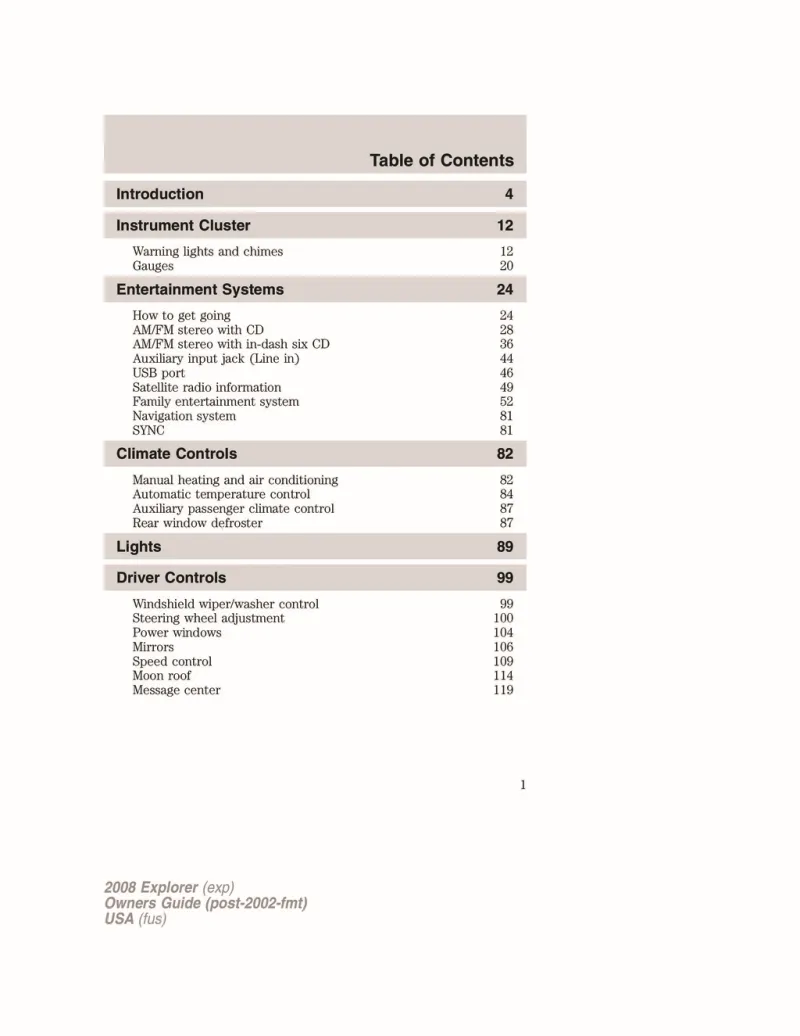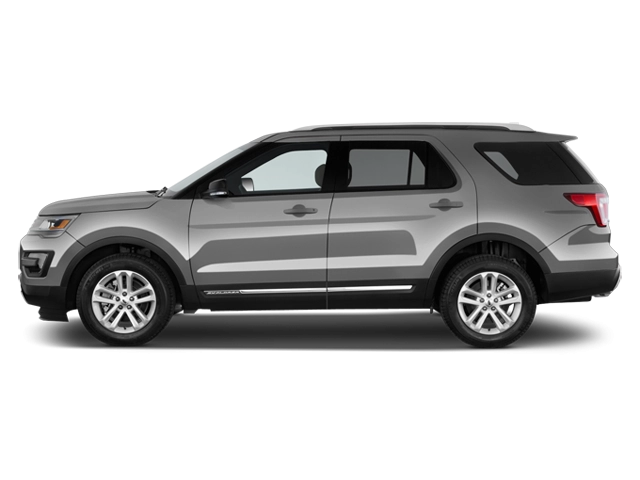2008 Ford Explorer Owner's Manual

Table of Contents
2008 Ford Explorer Overview
Introduction
The 2008 Ford Explorer stands as a prominent figure in the midsize SUV segment, renowned for its robust design, spacious interior, and versatile performance capabilities. Whether you're navigating through urban landscapes or embarking on rugged off-road adventures, this model combines practicality with a commanding road presence. With a variety of trim levels available, the Explorer caters to diverse preferences and lifestyles, making it an excellent choice for families and outdoor enthusiasts alike.
Powertrains
The 2008 Explorer offers impressive power options tailored for a variety of driving needs. The base model is equipped with a 4.0-liter V6 engine, delivering 210 horsepower and 254 lb-ft of torque. For those seeking more power, a 4.6-liter V8 engine is also available, providing a robust 292 horsepower and 300 lb-ft of torque. Both powertrains come with a five-speed automatic transmission, ensuring smooth gear shifts and commendable towing capacity, making the Explorer ready for whatever challenges lie ahead.
Trims
Features
The 2008 Ford Explorer is fortified with an array of features designed for comfort and safety. Standard amenities include air conditioning, cruise control, and a sound system with CD player and aux connectivity. Higher trims incorporate leather seating, a premium sound system, and navigation. On the safety front, you can expect advanced features like multiple airbags, ABS, and traction control, ensuring a secure ride for all passengers.
Owners Manual
The 2008 Ford Explorer's owner's manual is an invaluable resource for new owners, offering comprehensive details on vehicle operation, maintenance, and safety features. It provides insights into troubleshooting common issues and optimizing performance, ensuring that you have the necessary information to keep your Explorer running smoothly and safely for years to come.
User manual download
The Ford Explorer owner manual for the 2008 model year is to be found in PDF downloadable format on this page. The owner manual for the model year 2008 is free and in English, but the repair manuals are usually not easy to get and may cost more.
Manual Questions
Fill the form below and someone will help you!

